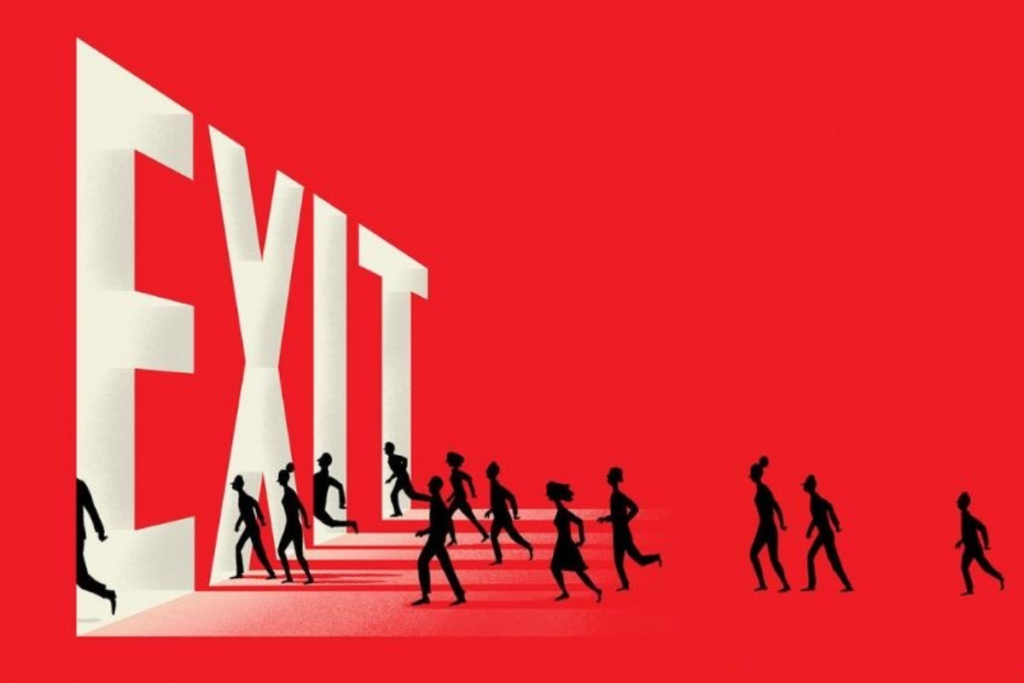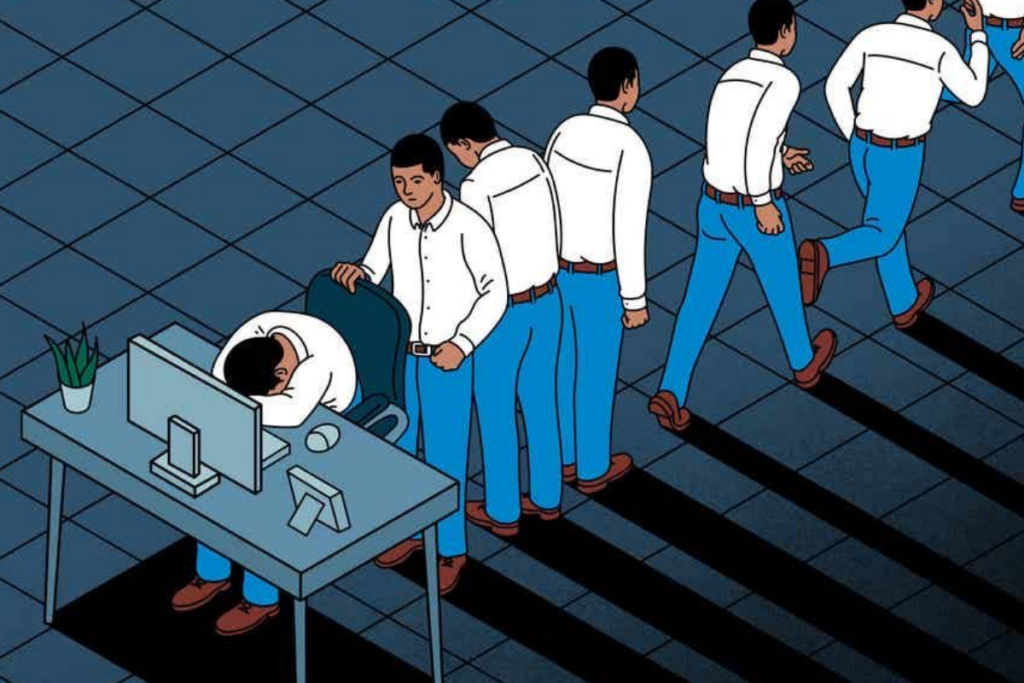After the “Great Resignation,” companies seek ways to keep their employees and spot those who might quit soon. The “Great Resignation” refers to a period that started in the spring of 2021. During this time, many workers in the U.S. began to quit their jobs at a high end because there were many job openings. There was a low unemployment rate, and COVID-19 vaccines were also making the pandemic less severe.
Impact of a Looming Pandemic
Anthony Klotz, a professor of business administration at Texas A&M University, came up with the term in May 2021. He explained that the trend was due to workers holding off on quitting their jobs early in the pandemic.

Each person had their reasons for changing jobs or leaving work. However, COVID-19 caused many of them to put off those decisions. Because of this, the number of people quitting their jobs for reasons other than retirement dropped. It went from 2.3% in February 2020 to 1.6% two months later.
The Great Resignation
From April 2020 to March 2022, the Job Openings and Labor Turnover Survey (JOLTS) by the U.S. Bureau of Labor Statistics (BLS) showed that 3% of workers would leave their jobs. Many employees often leave their jobs for better opportunities, but the drop in this percentage mainly showed something else. It reflected fewer new job openings during this time. Some people also delayed quitting their jobs because of the uncertainty and economic challenges of the pandemic.

With the introduction of COVID-19 vaccines and the economic recovery that followed, hiring increased. This also encouraged those who had delayed their quitting plans to finally make their decisions.
Reasons Why Employees Quit
Some believe more people quit their jobs during the pandemic for various reasons. However, a February 2022 Pew Research Center survey found the real reason. The research discovered that most workers left due to low pay and lack of career advancement, which shows that they were seeking better opportunities.

In March 2022, a record 4.5 million workers quit their jobs for reasons other than retirement. According to JOLTS data, this shows an increase of 152,000 from February 2022. There were also 11.55 million job openings at the end of March 2022, the highest number ever recorded.
Surveying Employees
A recent report from Paycor emphasizes that employers should particularly focus on certain employees. Bosses should note workers who have been in their company for less than two years. These employees are more likely to think about quitting.

After the “Great Resignation,” employers have been thinking about how to keep their workers for more extended periods. They also want to be able to identify employees who might leave. A recent report from Paycor highlights that employees who haven’t reached two years at their current job are particularly at risk of quitting.
ALSO READ: Why Employees Have Few Reasons To Switch Jobs At The Moment
Quitting Employees: A Two-Year Benchmark
7,000 HR, finance, and IT professionals who were respondents to Paycor’s survey all said the same thing. They believe employees who have been at a company for two years or less are likelier to leave their jobs. These employees are 38% more likely to look for a new job within the following year.

This is an important issue for HR departments. Almost half (46 percent) of the HR professionals surveyed have been in their current jobs for two years or less.
Why Employees Quit: Trouble Fitting In
Andy Nisevic, who leads One Degree Training and Coaching, explained why employees often leave their jobs after about two years. According to Nisevic, when people first join a team, they try hard to fit in. This can lead to lower performance as everyone gets to know each other.

Nisevic told Newsweek that if leaders lack the skills to help new employees integrate well, or if the new person doesn’t feel like they fit in with the team, they may decide to leave.
Employees Willingness to Grow
Nisevic concluded by saying that if an employee stays with a company for more than two years, it means they have become well-adjusted. However, Alex Beene, a financial literacy instructor at the University of Tennessee at Martin, suggests something else. He implies that leaving a job before the two-year mark doesn’t always mean the employee doesn’t fit in. For young professionals, it might show a willingness to grow and seek new opportunities.

Beene told Newsweek something many young professionals believe. “They say, ‘If you’ve worked at the same place for over two years, you’ve probably stayed too long.’”
Bigger Paycheck vs Enjoying the Job
Many people are told by their peers, recruiters, family, and coworkers that switching jobs frequently is good. They say it is even better to do it early in their careers. They believe it can help them get the most out of their skills. While job hopping was frowned upon in the past, today’s employers are less concerned about it.

However, Beene warns against moving to a new job just because of a higher salary. “While a bigger paycheck often drives these moves, it’s important to consider how much you enjoy your job,” he says. “Finding the right job fit is challenging. A small salary increase might not be worth it if you end up disliking the new job.”
ALSO READ: Celebrations End As Fast Food Chains Move To Cut Work Hours After Hike in Wages
Why Employees Quit: The Hiring Process
HR consultant Bryan Driscoll said that if employees leave a company within two years, it shows something important: the company is failing in its hiring process. Driscoll explained that this often means the company didn’t hire the right person for the job, which can point to issues in how they recruit and interview candidates.

Problems might include a mismatch between the job description and actual duties or unrealistic job expectations. Sometimes, the problem can be poor onboarding or bad management. Driscoll noted that employees often leave because of their managers. New employees will likely look for another job if they deal with ineffective or toxic management.
You Might Also Like:
Mortgage Payments in Alaska Increases by More Than 50%
U.S. Toy Company, Basic Fun!, Goes Bankrupt with $50M Debt
One of the Largest Solar Companies in the US Is on the Cusp of Collapse

